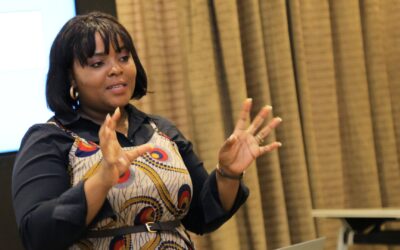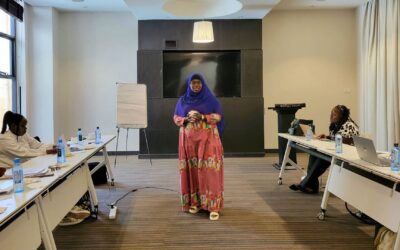In 2023, a Filipino man, seeking to support his family, left his home for what he believed was legal work in mainland Southeast Asia. Once in Thailand, members of a Chinese organized crime syndicate took him to a remote compound and forced him to run online cryptocurrency scams targeting American citizens and Canadians. His traffickers entrapped him within the compound and forced him to work 16 hours a day, seven days a week, with little food. After a year, he escaped and returned to the Philippines. Haunted by fears of prosecution, he felt unable to seek support services upon his return to the Philippines.
Unfortunately, this Filipino man’s story is tragic, yet not uncommon. In 2021, an estimated 50 million people were trapped modern slavery, with 28 million enduring forced labor. Evidently, this Filipino man’s story is part of a rising crisis in modern slavery. In response to the scourge of modern slavery, in 2015 UN member States adopted Goal 8 of the 2030 Sustainable Development Goals regarding decent work and economic growth. In Target 8.7 of SDG 8, countries committed to “take immediate and effective measures to eradicate forced labor, end modern slavery and human trafficking and secure the prohibition and elimination of the worst forms of child labor, including recruitment and use of child soldiers, and by 2025 end child labor in all its forms.”
Alongside this ambitious commitment, the Alliance 8.7 was born as a platform for partners to accelerate action, conduct research, share knowledge, drive innovation, and leverage resources to demonstrate progress.
Despite global efforts, the latest estimates reveal an alarming reality: 50 million people are still trapped in modern slavery, a staggering increase of 10 million since 2016. This increase is extremely concerning, especially considering that we are quickly approaching the SDG 2030 deadline.
The Alliance 8.7 has amassed an incredible network of thirty-six Pathfinder Countries, a multitude of civil society organizations, survivor networks, businesses, and academic collaborators across the world. At our disposal are resources such as cross-border collaborations, data-sharing platforms, and a unified commitment, yet progress toward SDG Target 8.7 has regressed. How, despite such a vast alliance of global partners, are we still seeing a rise in modern slavery?
The development of advanced digital technologies, the consequences of climate change, and the capacity of the financial sector each play a critical role in understanding the status quo and how we can regain our footing on the road to 2030. Each of these challenges brings distinct obstacles—and potential solutions—on the road to ending modern slavery.
The Role of Digital Technology on Recruitment and Exploitation
Digital technologies can enhance the crime of human trafficking and all forms of labor exploitation, presenting unique challenges as internet access becomes more and more widespread. Social isolation due to the COVID-19 pandemic led to the popularization of internet use in professional, academic, and social settings. The use of social media with easily accessible information about a person, their family, friends, location, and interests has worked in favor of traffickers, who have escalated the recruitment of victims on a larger scale than ever before. Perpetrators use technology to recruit, control, sell, and exploit vulnerable individuals with anonymity. For example, they may use the internet to sell children online for sex, advertise false jobs on social media platforms resulting in forced labor, and conduct online scam operations. According to the U.S. Department of State, several countries have reported increased online commercial sexual exploitation and sex trafficking. While technology has increased trafficking risks, environmental factors like climate change also create vulnerabilities that traffickers exploit. Let’s look at how extreme weather events contribute to this growing issue.
The Impact of Climate Change on Root Vulnerabilities
Climate change is elevating ocean and atmospheric temperatures and causing higher sea levels. As a result, we are experiencing a global increase in the frequency and intensity of natural disasters. It’s important to recognize that natural disasters don’t affect communities equally. Indigenous populations, communities of color, rural and low-income communities are disproportionately impacted by the negative consequences of extreme weather events. Climate change can intensify vulnerabilities to modern slavery, forced and child labor, especially among the most disadvantaged populations. Environmental changes can lead to homelessness, irregular migration flows, unemployment, forced labor and exploitation, food shortage, and increased poverty. Disasters uproot communities, leading to economic instability and creating prime conditions for traffickers to exploit displaced and vulnerable individuals. If action isn’t taken soon, forced labor could increase by millions, especially as climate change continues to displace vulnerable communities. The window to make a difference is closing fast, and we must act now. The climate is one of many factors influencing exploitation. Let’s explore the intersection of exploitation and the financial sector.
Money Laundering and the Financial Sector
With profits estimated at $239 billion annually, forced labor has infiltrated legitimate financial channels, complicating efforts to trace and disrupt these funds. To integrate the profits of exploitation into the financial system, traffickers use sophisticated money laundering strategies such as shell companies or layering to hide the funds’ illegal origins. Perpetrators’ use of advanced money laundering strategies can make it extremely challenging for governments and law enforcement agencies to identify profits resulting from exploitation. This forces governments into a continual game of catch-up in detecting and blocking these hidden profits.
Transforming Challenge into Opportunity
Digital innovation, climate resilience, and financial oversight are not separate issues—they are interconnected pillars in the fight against modern slavery. By addressing each area together, we can dismantle the complex systems that fuel exploitation. Just as traffickers exploit technology, so can we harness it to prevent exploitation and support survivors. Technology can also be used to prevent exploitation, detect victims, and support investigations and prosecutions. For example, the internet has been used to facilitate online support services to victims, and accessibility of E-Justice, such as online trials or pre-trials. To reach our 2030 goals, governments, businesses, and communities must collaborate to leverage these modern tools against trafficking. Alliance 8.7 partners must also recognize that only by prioritizing sustainable development that promotes community resilience and equitable access to resources can we begin to address the foundations of exploitation amongst the most vulnerable communities. Combating money laundering also presents an opportunity for law enforcement agencies to identify the profits of exploitation and to trace the illicit financial transactions back to their source. Thus, allocating more resources to financial oversight and implementing digital tools to detect exploitation can significantly disrupt traffickers’ profit channels. Removing the ability to profit from the crime disincentivizes perpetrators and prevents exploitation altogether. By disrupting criminal profits and fostering resilient communities, we can take bold steps toward a world free of modern slavery.
Together, we can tackle modern slavery. This is a shared responsibility, and all of us have a role to play—whether it’s raising awareness, supporting anti-slavery initiatives, or advocating for policy change. The road to 2030 is challenging, but with our collective efforts, ending modern slavery is within reach. With the right strategies, resources, and unwavering commitment, we can make freedom a reality for millions. Keep the conversation going—share this post, follow Alliance 8.7’s work, and stay informed. Every action, no matter how small, contributes to the fight against modern slavery.




